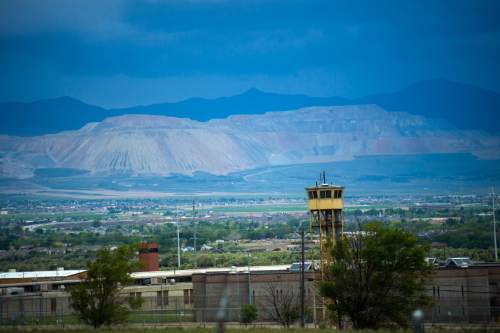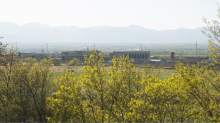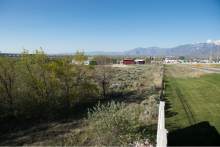This is an archived article that was published on sltrib.com in 2016, and information in the article may be outdated. It is provided only for personal research purposes and may not be reprinted.
The swath of land beneath the Utah State Prison in Draper could become one of the most valuable and important pieces of real estate in state history, leaders heard Monday as they began to chart the site's future.
Describing its development potential as "amazing," "remarkable" and "once-in-a-lifetime," experts urged state and local officials to "think big" if they hope to take full advantage of nearly 700 acres set to open up at Point of the Mountain, when the prison is eventually moved to west of Salt Lake International Airport.
"This may be the very best, strategically located site in the United States," said Mark Bouchard, a top commercial real estate expert with CBRE. He added that the land is likely to draw attention on a global scale.
Areas adjacent to the existing prison are already in an economic boom, driving record levels of office space and residential construction. Nearly 40 percent of Utah's record-breaking job growth since 2010 has happened along that 25-mile strip known loosely as "Silicon Slopes," said Natalie Gochnour, associate dean of the University of Utah's David Eccles School of Business.
Six of Utah's 10 fastest-growing cities are located in that area, straddling southern Salt Lake County and northern Utah County. Taxable sales in two of those municipalities, Draper and Lehi, have increased three times faster since 2010 than for the state of Utah overall.
"It's been absolutely phenomenal," Gochnour said of the growth. "It's boiling over."
But top officials said Monday that billions of dollars in additional economic gains could be at stake, depending on future land-use patterns, transportation, housing, access to recreation and the mix of industries drawn to the region where the aging prison is now.
"There is a risk of thinking too small," said Gochnour.
Congestion along Interstate 15 through Point of the Mountain is already a concern for future development, said Andrew Gruber, executive director of Wasatch Front Regional Council, a transportation-oriented planning group.
Along with extending existing north-south highways such as Mountain View Corridor, Gruber said, meeting elevated commuting demands will require expanded use of light rail, buses, biking, trails and other transit options.
Created earlier this year by the Utah Legislature, the Point of the Mountain Development Commission is tasked with creating a vision for the prison site and reporting back to lawmakers and Gov. Gary Herbert in December.
"What's happening there right now is having a ripple effect in a positive way across all of the state of Utah," said state Rep. Brad Wilson, R-Kaysville, who is the commission's co-chairman. "But we're just seeing the beginning of the opportunity for us."
The panel of state, county and city leaders, private-sector representatives and economic-development experts also will plan how to pay for the necessary roads, rail lines and other public utilities.
Members voted Monday to begin writing a request for proposals from consulting firms the commission could hire to support its work, using up to $800,000 in state funds.
No date was set for the commission's next meeting.







